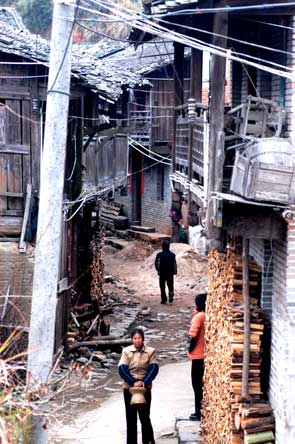| Tools: Save | Print | E-mail | Most Read |
| Multi-Ethnic, Multi-Lingual Chinese Village |
| Adjust font size: |
Qucun Village, a small and quiet hamlet, located in the Xikou Township of Jianning County in southeast China's Fujian Province, has only about 400 households and 1,700-odd people, but it surprisingly has 118 surnames and more than 50 dialects, the Southeast Express reported on January 23.
Villagers here communicate in Mandarin. "Even the most senior villager can speak Mandarin and this is something rare in dialect-speaking areas of the country," said Zou Zhiyuan, an official with the village committee. "There is averagely one surname for every 15 people," said Zou. "People only communicate in dialects at home with their family members," Zou said. For example, Zou and his wife and children communicate in Liancheng dialect of Longyan Area at home. According to senior villagers, the village's beginning was related to the War of Resistance Against Japanese Aggression (1937-1945). The villagers came from 57 counties of 11 provinces across China, with the most hailing from 17 counties of Zhejiang Province and 14 counties of Jiangxi Province. The two areas were once scarred by large-scale offensives of Japanese troops in the early 1940s. When asked how their grandparents trekked such a long way to come here, villagers answered with "fleeing from the Japanese troops." Zhang Taigen, born in Linchuan County of Jiangxi Province in 1935, still remembers how his family fled from his native town before it fell into the Japanese aggressors. "My mother, I and my younger brother encountered Japanese troops on the way. We hid behind a heap of faggots while Japanese soldiers poked the faggots with their bayonets. My mother covered my brother's mouth with her hands to stop his crying. Later we came to this village and settled down," said Zhang. Zou said that the village was finally formed by the banded refugees at the end of 1940s. "It is a small basin area surrounded by mountains and has poor transportation facilities," said Zou. "But it has smooth lands and two rivers providing enough irrigation and drinking water, proving a reason for the refugees not to return to their native towns after the war." Each family owns on average 0.13 hectares of farmland. "We live in peace and contentment. Neighbors have good relations," said Zou. There are 56 ethnic groups in China. In addition to Mandarin, there are eight dialects, each with sub-dialects. The Han, Hui, Man and She communicate in Mandarin, while the others have their own languages. Zou said that the villagers keep alive a tradition of writing antithetical couplets (often written on a scroll or carved on a pillar) with good wishes, usually marking them with their surnames or hometown names. It shows that, though decades have passed, villagers still yearn for the native soil they left long ago, the Southeast Express reported. (China.org.cn by Li Jingrong, January 26, 2007) |
| Tools: Save | Print | E-mail | Most Read |
 |
| Related Stories |
|
